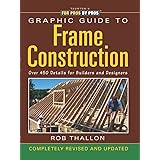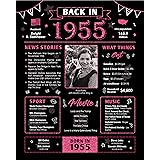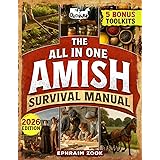Stepping into a home, I often find my gaze drawn to the staircase. It’s more than just a passage; it’s the home’s spine, a grand gesture that dictates flow and first impressions. The video above beautifully captures the essence of English style interior wooden stairs, showcasing their timeless appeal and intricate craftsmanship.
These staircases, whether found in a bustling urban townhouse or a quiet countryside cottage, embody a unique blend of heritage and design ingenuity. They don’t just connect floors; they tell a story, reflecting an era where quality and aesthetic harmony were paramount.
The Enduring Appeal of English Style Wooden Stairs
English style wooden stairs are like a well-tailored suit – classic, refined, and always in vogue. They bring an intrinsic sense of warmth and dignity to an interior, transforming a functional necessity into an architectural centerpiece. The charm lies in their inherent ability to transcend fleeting trends.
They are characterized by a commitment to robust materials and meticulous attention to detail. This style evokes the comfort of a bygone era while remaining perfectly suited for contemporary living spaces. It’s a testament to design principles that prioritize both beauty and lasting quality.
Craftsmanship: More Than Just Wood
At the heart of any magnificent English style wooden staircase is unparalleled craftsmanship. It’s an art form where the skill of the artisan brings life to raw timber, creating a sculptural element within the home. This level of detail elevates a mere structure to a piece of fine furniture.
Every curve, every joint, and every polished surface speaks of dedication. The precision in turning balusters or carving newel posts isn’t just about aesthetics; it ensures structural integrity and a tangible sense of solidity. This devotion to craft sets these staircases apart, making them durable heirlooms.
The Language of Materials: Oak, Walnut, Mahogany
The choice of wood is foundational to the English staircase aesthetic. Rich hardwoods such as oak, walnut, or mahogany are not merely materials; they are characters in the story of the home. Each offers a distinct personality, contributing to the overall ambiance.
Oak, with its robust grain and warm tones, conveys strength and tradition. Walnut offers a deeper, more luxurious hue, often associated with sophisticated elegance. Mahogany, known for its lustrous finish and deep red-brown color, exudes a sense of historical grandeur. These woods are typically polished to perfection, allowing their natural beauty and intricate grains to shine, deepening their character over time.
Elements of Classic English Stair Design
A classic English style wooden staircase is a symphony of carefully chosen components. These elements work in concert to create a balanced and inviting structure. Understanding each part helps in appreciating the whole design.
The overall impression is one of harmonious proportion and elegant symmetry. This meticulous planning is what gives English interiors their distinguished and organized feel, even in their most elaborate forms.
Balusters, Newel Posts, and Handrails: Sculpting Elegance
The individual components of an English staircase are often works of art themselves. Turned balusters, with their intricately carved profiles, rise like elegant sentinels along the flight. They provide safety while also contributing significantly to the visual rhythm of the staircase.
Newel posts, often the most substantial decorative element, serve as the anchor points for the handrails. They can be grand, carved with historical motifs, or simply robust and clean-lined. Gracefully curved handrails guide the ascent and descent, offering a smooth tactile experience that is both functional and beautiful. Together, these elements frame the space, drawing the eye upwards with an inviting flow.
The Art of Proportion and Symmetry
English design principles deeply emphasize proportion and symmetry, and the staircase is no exception. Each step, riser, and tread is designed with a careful consideration for its relationship to the whole. This creates a visual balance that is deeply satisfying to the eye.
The overall structure feels grounded and stable, yet often possesses an airy grace. Like a carefully composed piece of music, every note – or in this case, every architectural detail – is placed with precision. This adherence to balanced design contributes to the timeless appeal and serene atmosphere these staircases create.
Bridging Eras: Modern English Staircase Adaptations
While rooted in tradition, English style wooden stairs are far from static. Contemporary interpretations cleverly merge classic charm with modern minimalism, proving their adaptability. This evolution ensures their relevance in today’s diverse architectural landscape.
The modern English staircase is not a compromise but a clever fusion, offering the best of both worlds. It respects the past while embracing the clean aesthetics and functional demands of the present.
Merging Tradition with Minimalism
A more contemporary English staircase often features a refreshing blend of old and new. Imagine traditional wooden treads, rich with character, paired with sleek metal spindles that offer a clean, industrial edge. This contrast creates a dynamic visual interest, preventing the design from feeling overly ornate.
The warmth of the wood grounds the space, while modern elements like glass panels introduce lightness and openness. This thoughtful integration allows natural light to flow freely, expanding the perceived volume of the stairwell. It’s a dialogue between eras, where each element enhances the other, resulting in a sophisticated and fresh aesthetic.
Innovative Materials and Open Spaces
The use of materials beyond traditional wood has opened new avenues for modern English staircase design. Glass panels, for instance, are a popular choice. They create a sense of transparency and expand the visual space, allowing the staircase to become a subtle, elegant presence rather than a heavy focal point.
Conversely, wrought iron balusters with minimalist designs can introduce a touch of understated grandeur. These contemporary adaptations ensure that the natural warmth of wood remains central, while the overall design feels light, airy, and thoroughly modern. This innovative approach allows homeowners to maintain the essence of English style while embracing current design sensibilities.
Illuminating the Journey: Lighting Your English Staircase
Lighting is an unsung hero in staircase design, particularly for English style wooden stairs. It’s not just about visibility; it’s about enhancing texture, creating mood, and highlighting architectural features. Proper illumination can transform a functional pathway into an inviting ascent.
The play of light and shadow on polished wood and carved details adds depth and drama. It’s an essential element that truly brings the staircase to life, especially as evening descends.
Strategic Placement and Ambiance
Soft wall sconces placed strategically along the stairwell can cast a gentle glow, emphasizing the wood’s grain and the intricate details of balusters and newel posts. The light should be warm and inviting, complementing the rich tones of the timber rather than overpowering them. Like a subtle spotlight on a stage, it draws attention to the stars of the show.
Pendant lights suspended elegantly above the landing or the main stairwell can create a focal point, drawing the eye upwards and adding a touch of grandeur. Recessed step lighting provides practical safety and a subtle, atmospheric glow. Thoughtful lighting enhances both the aesthetic and functional aspects, making the journey up and down the stairs a delightful experience.
Adding Texture and Warmth: The Carpet Runner
Introducing a patterned carpet runner to English style wooden stairs is akin to adding a statement necklace to a classic outfit. It introduces an additional layer of texture, color, and pattern, elevating the elegance further. This small detail can make a significant impact on the overall aesthetic.
Beyond its visual appeal, a runner offers practical benefits. It’s a detail that marries beauty with everyday functionality, making the staircase more comfortable and safer for daily use.
Beyond Aesthetics: Functionality Meets Style
A classic English sophistication can be effortlessly infused with a patterned carpet runner. Whether it’s a subtle geometric design, a traditional floral, or a bold stripe, the runner provides an opportunity to inject personality and color. It creates a visual path, guiding the eye and adding a luxurious feel underfoot.
Beyond elegance, carpet runners offer practical advantages. They reduce noise, dampen the sound of footsteps, and provide cushioning, making the stairs more comfortable. Crucially, they enhance safety by offering improved grip, minimizing the risk of slips on polished wooden surfaces. It’s a design element that smartly combines comfort, elegance, and peace of mind.
Placing Your English Staircase: A Versatile Statement
One of the most remarkable aspects of English style interior wooden stairs is their incredible versatility. They possess a chameleon-like quality, adapting seamlessly to various architectural styles and interior aesthetics. This adaptability ensures their enduring popularity in home design.
Whether you reside in a grand Victorian abode or a sleek, contemporary apartment, these wooden stairs integrate beautifully. They are not merely an addition; they are an integral component that elevates the entire living space, echoing the timeless charm of English design principles.











